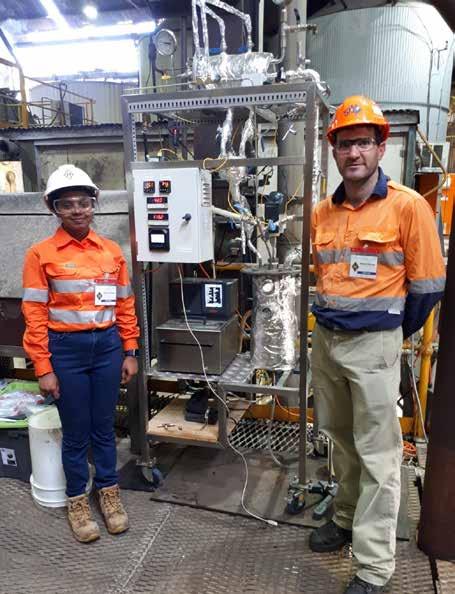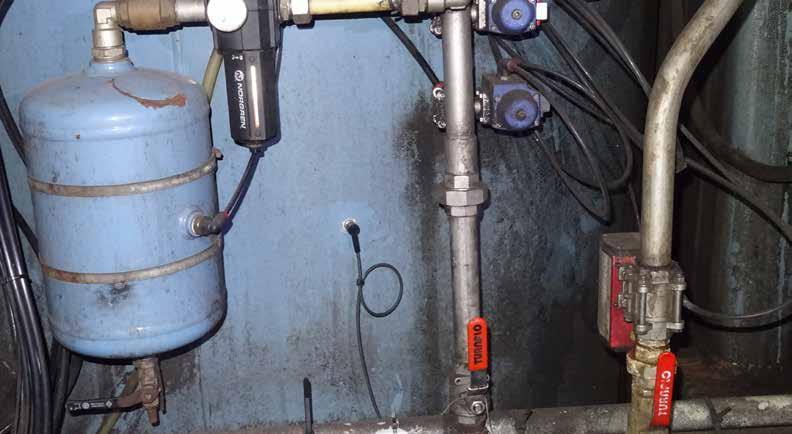
3 minute read
MILLING PROJECT SUMMARIES
The following summaries relate to milling research undertaken by Queensland University of Technology with funding from SRA. Updates were presented at the recent Regional Milling Research Seminars.
Investigations to mitigate the effects of juice degradation in factory evaporators on sugar recovery and quality, corrosion, and effluent organic loading
Advertisement
Sucrose degradation reactions during juice evaporation cause a direct reduction in sugar yield and revenue. The associated degradation of monosaccharides and other components produces acidic compounds which cause corrosion of pipework, tube plates etc.
The aim of the project was to provide a better understanding of the causes of sucrose degradation and acid formation in factory evaporators and their effects on sugar recovery, sugar quality, corrosion and effluent loadings, and to develop strategies to mitigate these issues.
Anecdotally, improving the quality of juice has been shown to minimise sucrose degradation but detailed attribution to specific impurity types (phenolics, proteins, sulphurous compounds, etc) has not been determined in factory juices. Composite sampling and analyses of juices, syrup, condensates and vents across the evaporator station were undertaken at Isis, Invicta, Condong, Pioneer and Rocky Point mills over the 2018, 2019 and 2020 seasons.
A test program has been conducted as part of a PhD study to examine the pathways of sucrose and monosaccharide degradation by boiling synthetic solutions as well as factory juices in pilot plant evaporator equipment.
These studies have investigated the impacts of pH and individual juice components on the degradation rates and shown that there is substantial interaction in the effects of the individual juice components.
PhD student Chalani Marasinghege and QUT's Darryn Rackemann monitor operation of the pilot evaporator rig at Rocky Point Mill. The PhD student, Ms Chalani Marasinghege, presented these results at the 2022 Australian Society of Sugar Cane Technologists conference in Mackay and was rewarded with the Denis Foster Chemistry/Chemical Engineering Award for her paper. Various mitigation strategies were also tested in the pilot evaporator. Mitigation strategies focus on minimising the sucrose loss from occurring through equipment or process design or dealing with the acidic components produced.
PURGE SENSOR
Configuring evaporator stations to provide bleed vapour to batch pan stages

Australian sugar factories typically use Robert evaporators in quintuple sets for juice evaporation and large unstirred batch pans for crystal sugar production.
These two equipment arrangements present several challenges for Australian factories to implement large reductions in process steam consumption such as supplying the pan stage with vapour 2 or vapour 3. The pan stage’s large and variable vapour consumption must be considered closely when specifying the configuration of the evaporator station.
For evaporator stations to provide high levels of steam efficiency in sugar mills, a trade-off exists between capital investment, complexity of the operation, productivity of the pan stage, steam efficiency and sucrose losses.
This project has used modelling to determine the suitability of using quadruple, quintuple and sextuple evaporator configurations to supply vapour to the pan stage.
Use of a purge sensor to improve performance in the operation of batch centrifugals
All Australian sugar mills except one use batch centrifugals to separate the raw sugar crystals from the mixture of crystals and mother molasses (massecuite) produced during the crystallisation step.
While spinning at high speed, wash water is added to the crystal bed to remove molasses from the surface of the crystals in order to produce the sugar product at the required purity as specified by the customer.
Ideally the wash water addition is conducted in a manner that minimises the dissolution of the crystals.
The optimal timing and duration of this wash water addition is difficult to determine and currently relies on the experience of the centrifugal station operators. To better understand (and ultimately better control) this process, this project is investigating the use of a purge sensor (pictured above) mounted on the casing of a batch centrifugal.
The purge sensor detects the impact of the molasses and wash water as it passes from the spinning basket onto the casing.










